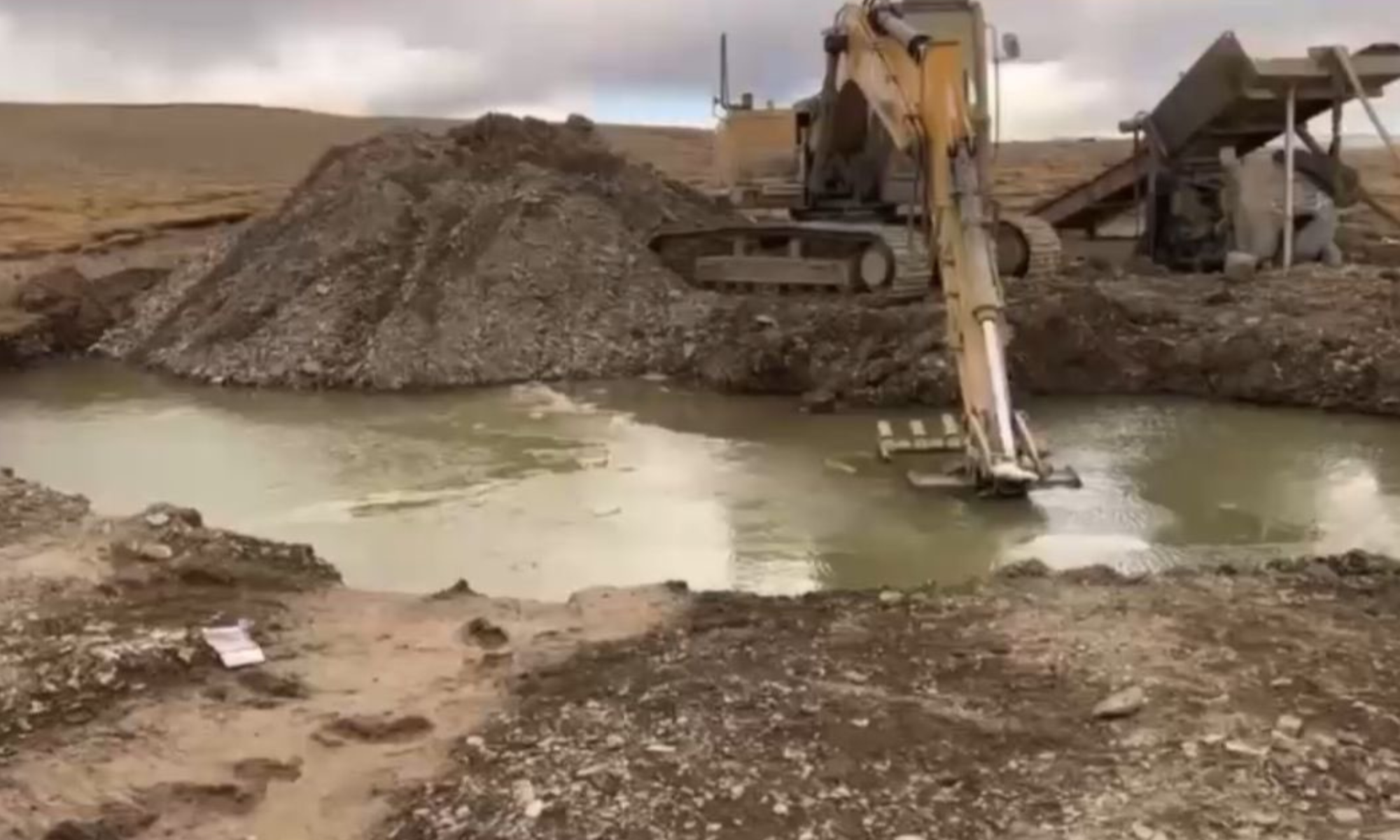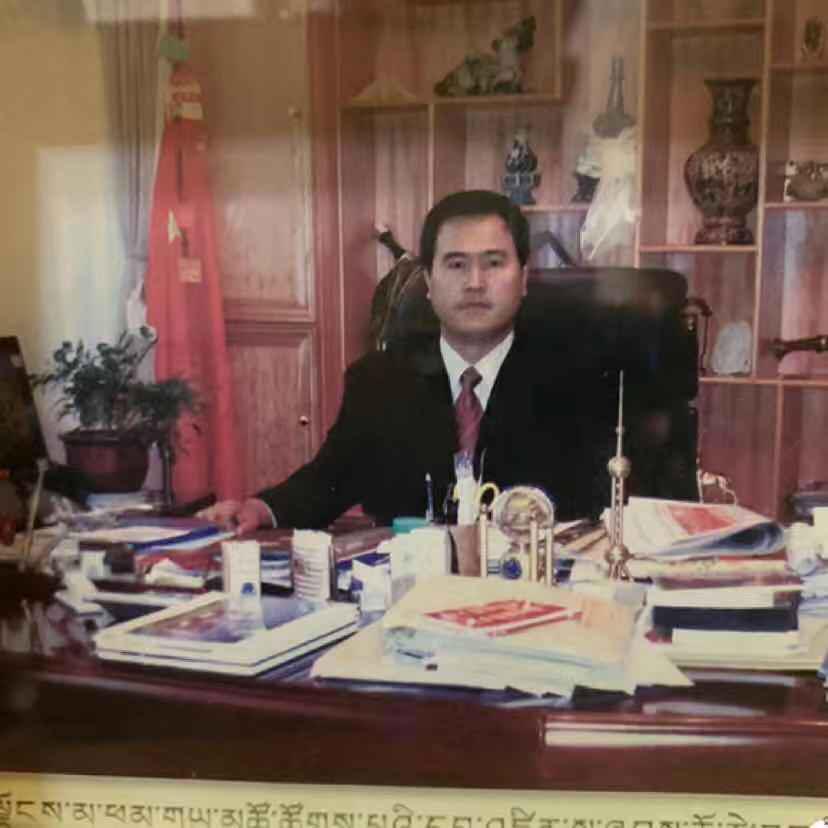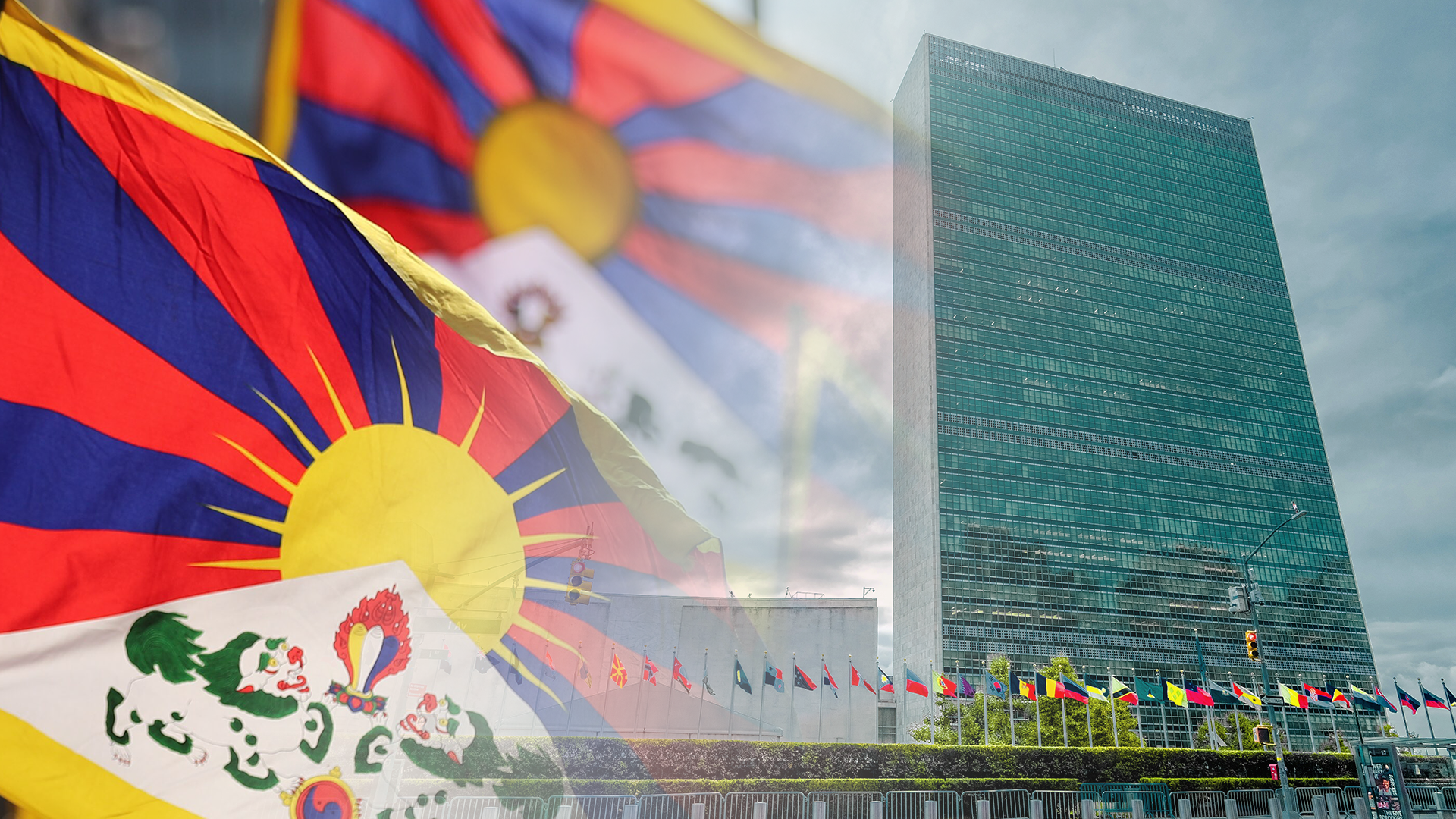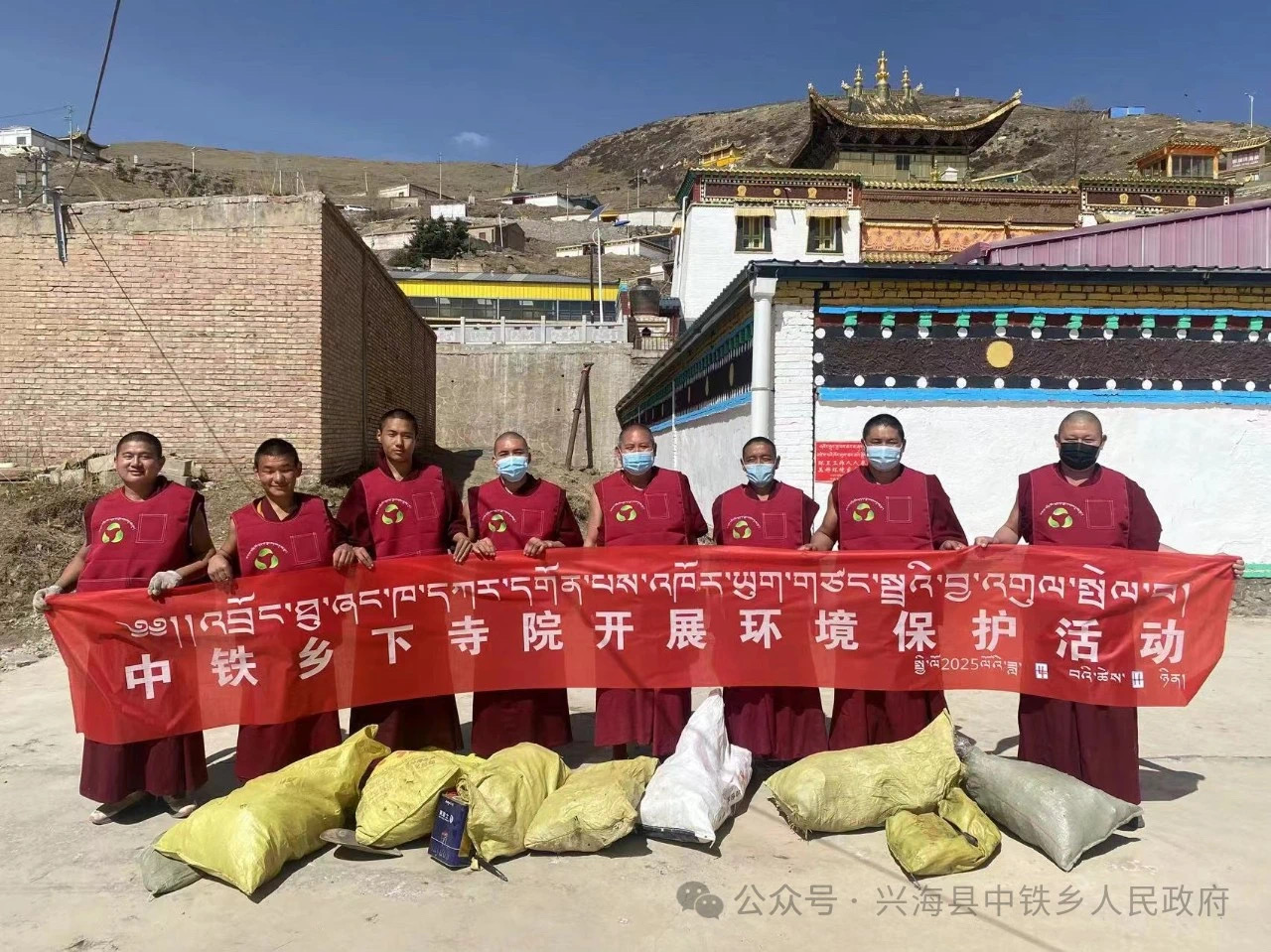
Twenty villages in the eastern Tibetan region of Amdo face displacement to make way for a major new hydropower dam on the upper reaches of the Machu River, according to a new notice issued by the Qinghai provincial government and Tibet Watch sources.
This represents the first official confirmation of yet another large dam on the heavily dammed river known as Machu (黄河, Yellow River). The river’s headwaters in eastern Tibet are already interrupted by a cascade of nine hydropower dams before the river flows into China, where it is known as Huang He and celebrated as the cradle of Chinese civilisation.
The Tsiha Gorge (茨哈峡, Cihaxia) hydropower dam will be constructed upriver from the massive 180-metre (590 ft) high Yangchu hydropower dam, which began operations last year, and which official media boasted had been built by AI-driven robots. Construction of Yangchu Dam led to the devastation of an entire community[1] centred around the religious heart of Atsok monastery in Palkha village, also in Drakkar county in Tsolho (Hainan) Tibetan Autonomous Prefecture, Qinghai. Monks were forced to dismantle their own homes, and, before ordering them to leave, Chinese authorities announced the removal of the monastery from the list of recognised cultural and historical sites in the county.[2]
A further official notice issued last month by the People’s Government of Drongthu Township, Drakkar County – home to five of the twenty villages facing inundation – stated that team members have been organised to publicise policy and carry out “ideological work” to Tibetan villagers and nomads in connection with the dam construction, indicating that the authorities acknowledge that displacement and resettlement are unlikely to be welcomed by the local community.[3]
A notice[4] published on 7 May by the Qinghai provincial government bans people from moving into the villages enlisted for land acquisition – with the exception of select groups such as newly-wed couples and released prisoners – and prohibits anyone in the area from planting trees or crops. It stipulates that no compensation would be provided for anyone acting against the order.
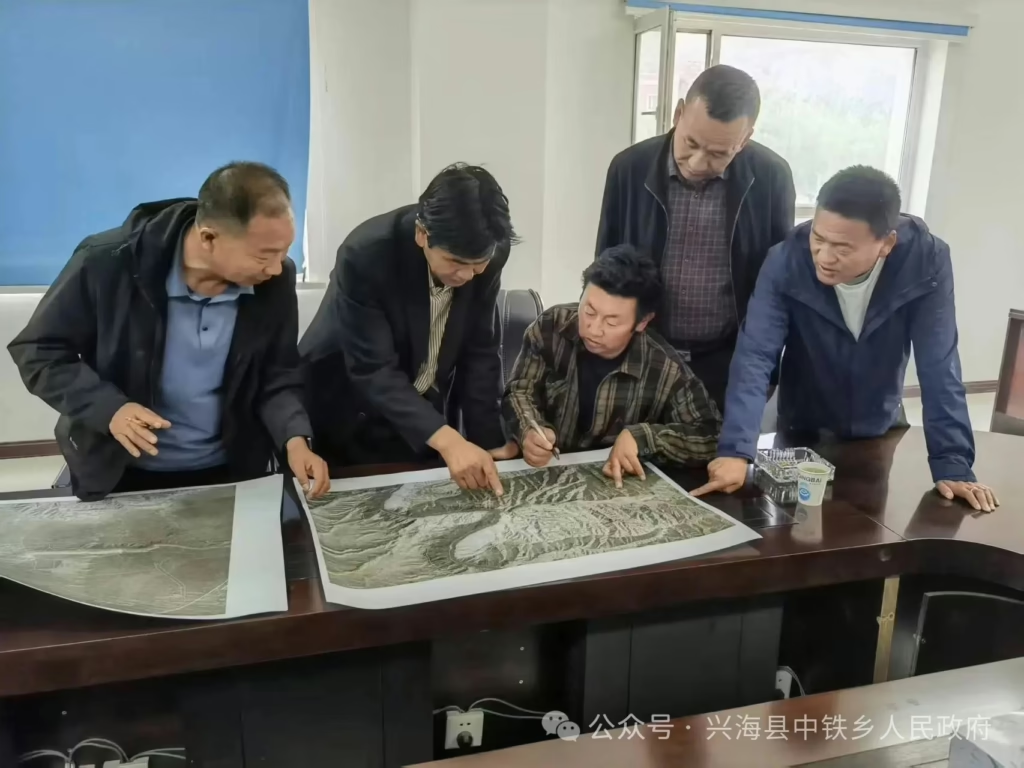
Discussion on the planned Tsiha Gorge Hydropower Dam early June Source: Official WeChat account of the People’s Government of Drongthu Township
The new Tsiha Gorge (茨哈峡, Cihaxia) hydropower dam is due to be built at 254 metres high on the upper reaches of the Machu River at the junction of Badzong (同德县,Tongde) County in Golog Prefecture and Drakkar (兴海县, Xinghai) County of Tsolho Prefecture in the Tibetan region of Amdo.
A government news report[5] published on 6 June on Chinese social media, which has now been deleted, stated that a special meeting for coordination of teamwork was held with relevant departments of six villages in Drakkar County to speed up “physical index investigation work”, an official language for documenting details of every single family in the community and their grazing land.
Three monasteries are known to be in the Drongthu Township, and images on official social media depicted monks outside a temple who were apparently required to clean up the area under local authority instructions. According to the QQ post, on 9 May, the People’s Government of Drongthu Township in Drakkar organised the heads of seven villages and three monasteries to clean up the area. Other photographs showed local officials apparently instructing villagers and nomads, although there was no mention in the article about seeking consent, but about the importance of “doing a good job in ideological work” and “promotion” of the plans “in order to guarantee the smooth implementation of the project construction”.

Monks of Khakar Monastery in Drongthu Township pose with banner for Drakkar County’s environmental sanitation campaign on 9 May Source: Official WeChat account of the People’s Government of Government of Drongthu Township
The construction of the dam is set to affect 20 villages across the Golok and Tsolho Tibetan Autonomous Prefectures, many of which lie far from the main course of the Machu River. A likely reason for this wide-reaching impact is China’s standard practice of surrounding hydroelectric dams with solar farms, which require expansive, moderately sloped terrain—putting even distant communities in the path of land acquisition.
Six are in Drakkar County of Tsolho Prefecture, with Thangche Village in Chungon Township, and the villages of Dordzong, Chachen, Ramo, Ronglon, and Takthang in Drongthu Township. Other villages are in Machen and Badzong counties of Golok Tibetan Autonomous Prefecture: Yugshung Village in Ragya Township of Machen County, Bado Village in Balung Township of Badzong County, and the villages of Serthang, Kyawo, Dungkar, Chala, Chumar in Thanggo Township of Badzong County, as well as Zamba, Thar, Daeukar, Mogkar, Nyinlung, Taklung and Taksoe villages in Sholma Township of Badzong County.
Chinese scientists have warned of the risks of heavy infrastructure construction in a seismically unstable region where river systems are increasingly unpredictable due to climate change. But China has intensified the construction of dams by the same state-owned corporations that are building more coal-fired power stations in China, the world’s biggest emitter of greenhouse gases.
An interactive map produced by Tibet Watch and Turquoise Roof shows the concentration of the power grid around coal-fired plants around Machu River, indicating China’s continuing reliance on fossil fuels, which is contradictory to claims of aggressive decarbonization. Despite the visible presence of renewable energy sources, renewable sources do not appear to be as well integrated in the grid as fossil fuels. This reflects a gap between the country’s green energy claims and its actual operational practices.
The cascade of nine hydropower stations on Machu River already makes the Tibetan Plateau a major exporter of electricity by ultra-high voltage power grid to distant inland province Henan, powering its intensifying industrialisation and rising carbon emissions. These dams exploit the kinetic energy of a river that Xi Jinping, this month, in the provincial capital of Qinghai, Xining, equated with ‘Yellow River culture’, a drive that compels Tibetans to adopt a nationalist Chinese identity, culture and language, while seeking to erase their own distinct ways of life, livelihoods and Buddhist practices.
Citations:
[1] Tibet Watch report, https://tibetwatch.org/the-risks-of-chinas-dangerous-dam-building-in-tibet-the-impacts-of-chinas-move-upstream-on-the-machu-yellow-river/
[2] Tibet Watch and Turquoise Roof report, 13 November 2024, ‘The Risks of China’s Dangerous Dam Building in Tibet: The Impacts of China’s moving upstream on the Machu/Yellow River’, https://tibetwatch.org/the-risks-of-chinas-dangerous-dam-building-in-tibet-the-impacts-of-chinas-move-upstream-on-the-machu-yellow-river/
[3] https://mp.weixin.qq.com/s/zl_xaPQwZJZP2VoMO9VmyA
[4] ‘Notice of the People’s Government of Qinghai Province on Ban on Projects and Population Transfer in Tsiha Gorge Hydropower Construction and Inundation Area’, https://www.qhtibetan.com/xw/system/2025/05/07/030116506.shtml

